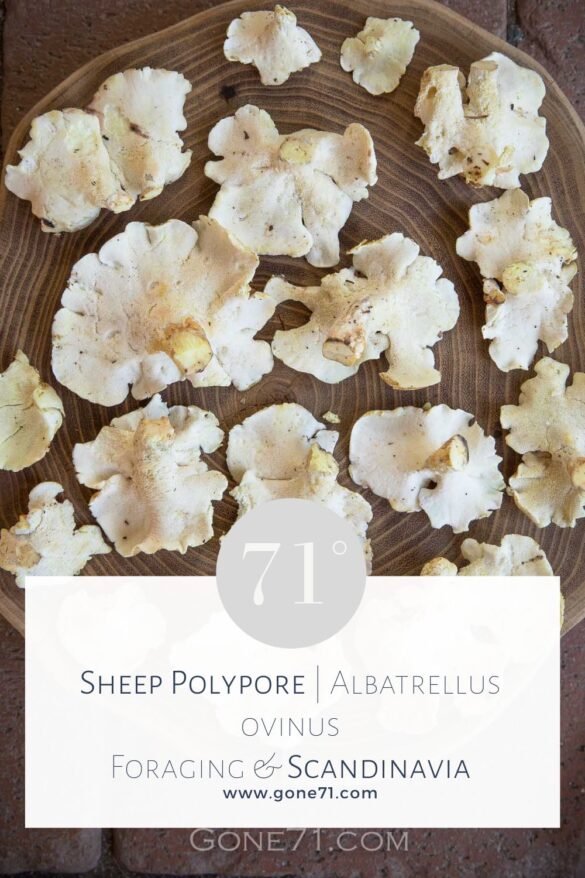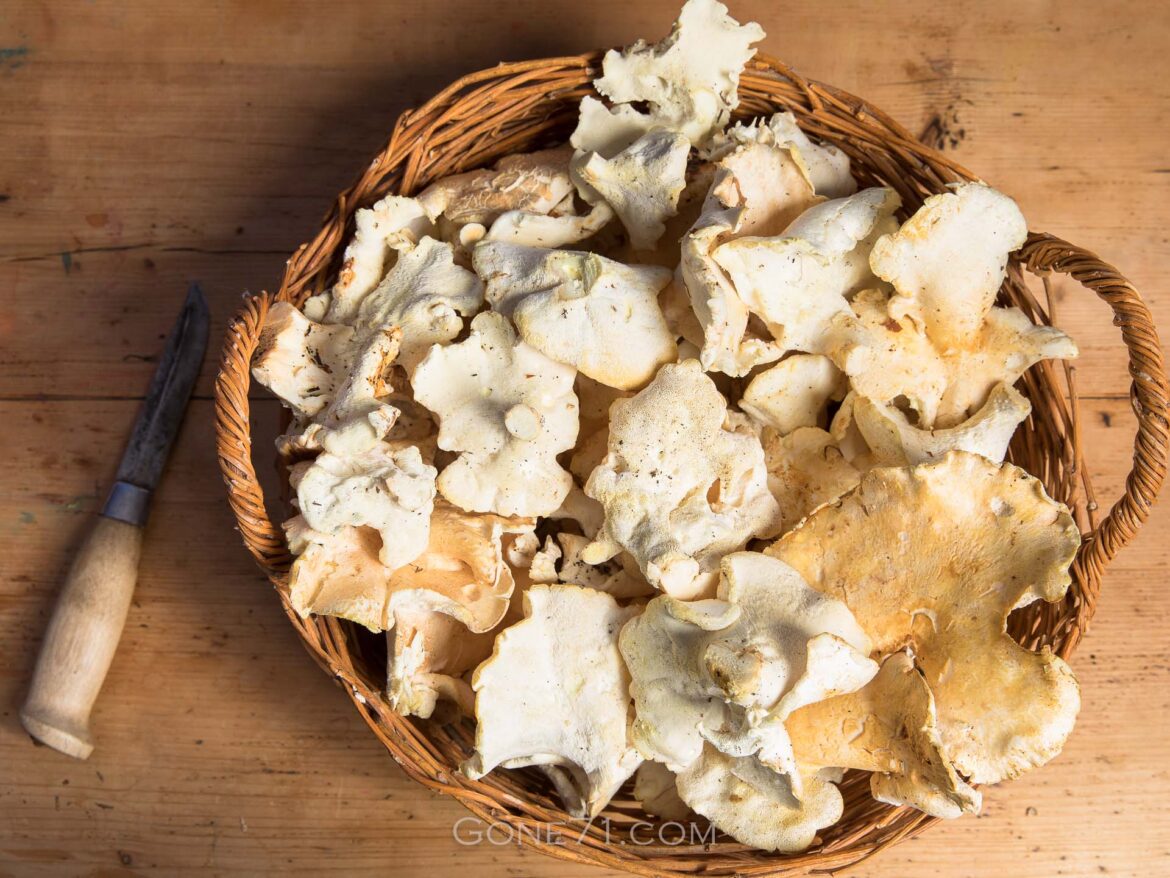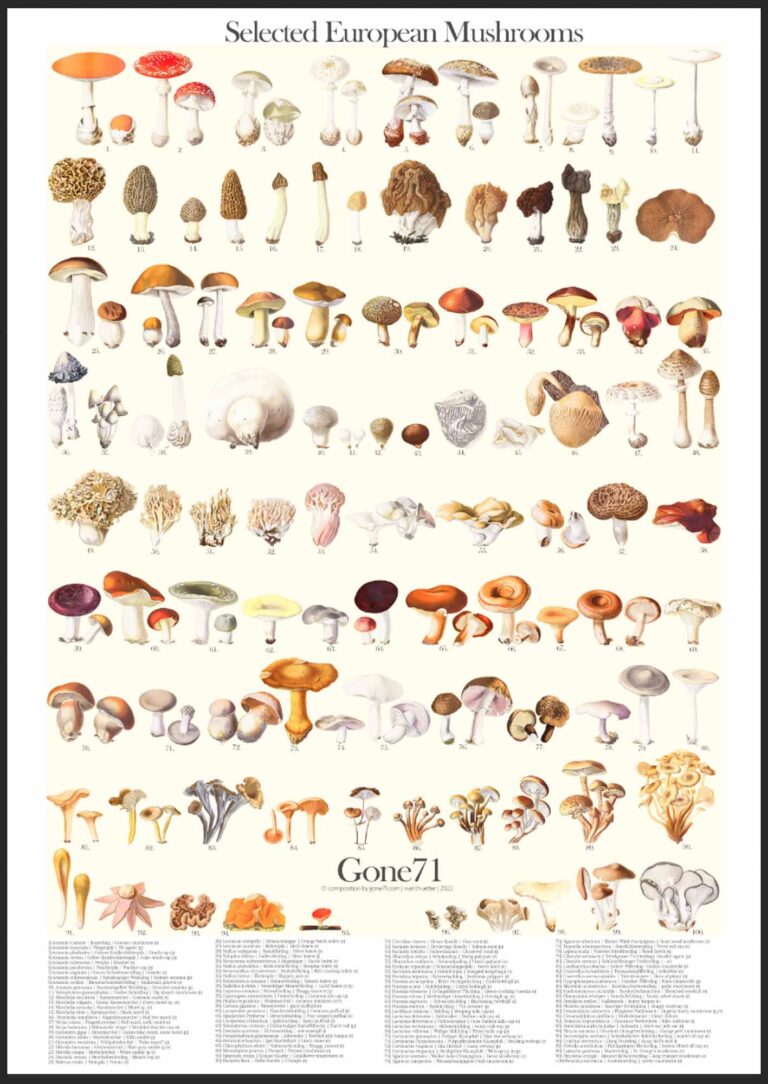nor.: Fåresopp | swe.: Fårticka | fin.: Lampaankääpä
| dt.: Schafporling | sci. syn.: Polyporus ovinus
Albatrellus ovinus, also known as the sheep polypore or forest lamb, is mostly overseen by foragers and often confused with its close relative the Fused polypore. However, it has its very own qualities and is usually placed above its close relative in terms of culinary value.
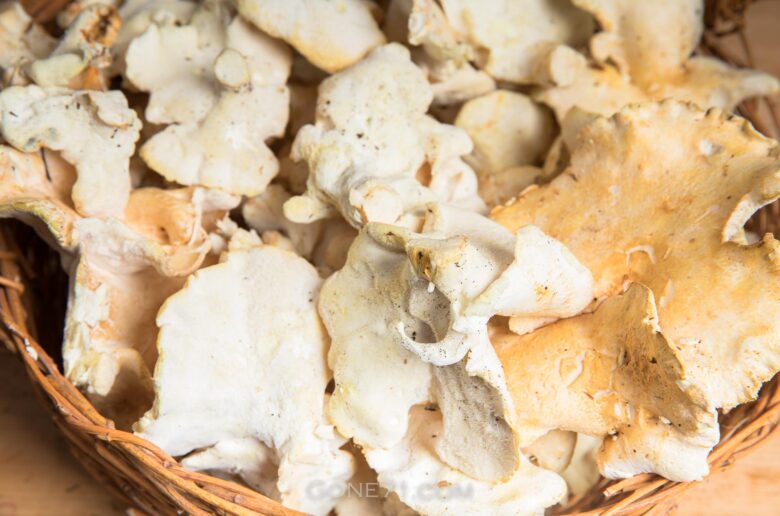
Appearance & habitat of the sheep polypore
cap diameter: 4 – 18 cm
stem: uneaven, thick, usually longer stem as the fused polypore
months: July – October
colours: white, cap can turn yellow upon preassure, stem whitish to yellow-brownish
habitat: mixed forests, usually in company of spruce
smell: pleasant
consumption: cooked (can lead to problems if consumed raw)
The sheep polypore is common in the temperate regions of Europe and North America. In Europe, it is found in many countries including Norway, Sweden, Denmark, Germany, Austria, Czech Republic, Switzerland, France, Italy, Spain, and Poland. It often grows at the base of conifers, such as pines, spruces, and firs.
Typically sheep polypore forms a large, fan-shaped bracket, with a smooth, white to pale gray or buff-colored upper surface and a white to pale yellow pore surface underneath. The flesh is white and thick, and the mushroom has a strong, rubbery texture.
The cap can grow up to 20-30 cm in width, it’s usually semicircular or fan-shaped. The uneaven stem can be very thick and the flesh is white or pale yellow.
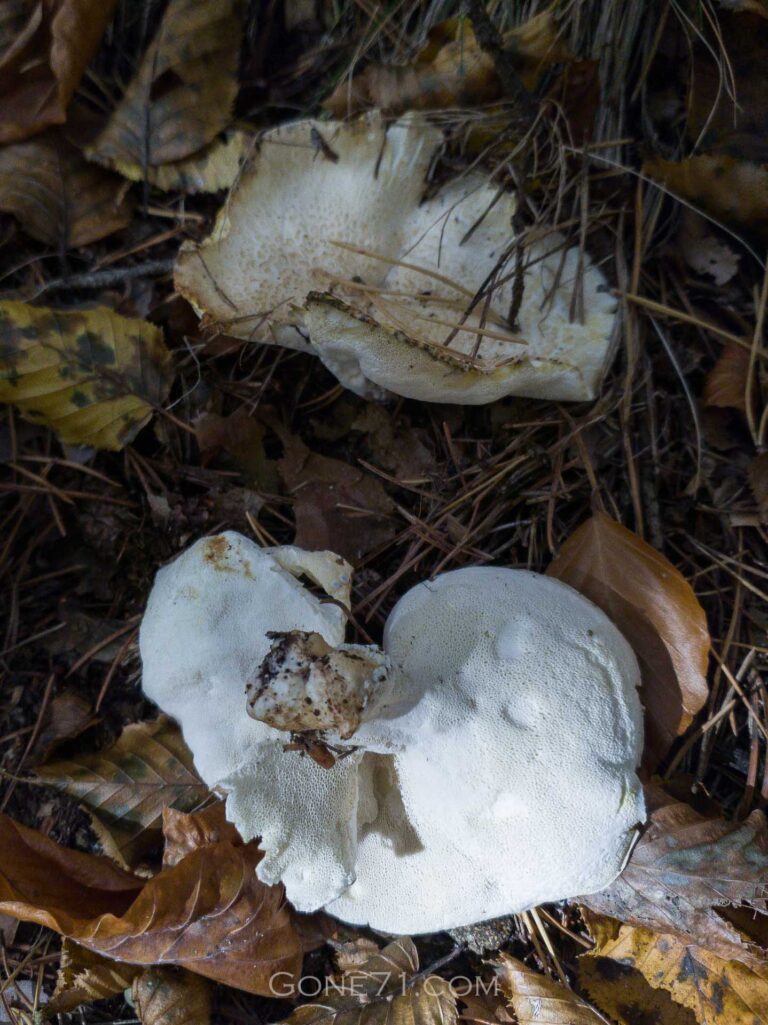
Confusion with other mushrooms
Albatrellus ovinus is a species of mushroom that can be easily confused with other species. Some possible confusion partners of Albatrellus ovinus include:
- Albatrellus confluens: This species is similar in appearance to Albatrellus ovinus and can also be found growing on the ground at the base of hardwoods, such as oak and beech. However, Albatrellus confluens typically forms clusters, while Albatrellus ovinus typically grows alone.
- Grifola frondosa: This species is also known as hen-of-the-woods, and it can resemble Albatrellus ovinus when it’s young. However, Grifola frondosa typically grows on the base of oak trees and has a different appearance and a more tan color.
- Polyporus squamosus: This species is also known as the dryad’s saddle or pheasant’s polypore, and it can resemble Albatrellus ovinus when it’s young. However, Polyporus squamosus typically grows on hardwoods, such as oak and beech, and has a more scaly texture on the upper surface of the cap.
The most common cunfusions are usually with other species of Albatrellus as the fused polypore or A. citrinus. They are all edible and a distinction can sometimes only be made under a microscope.
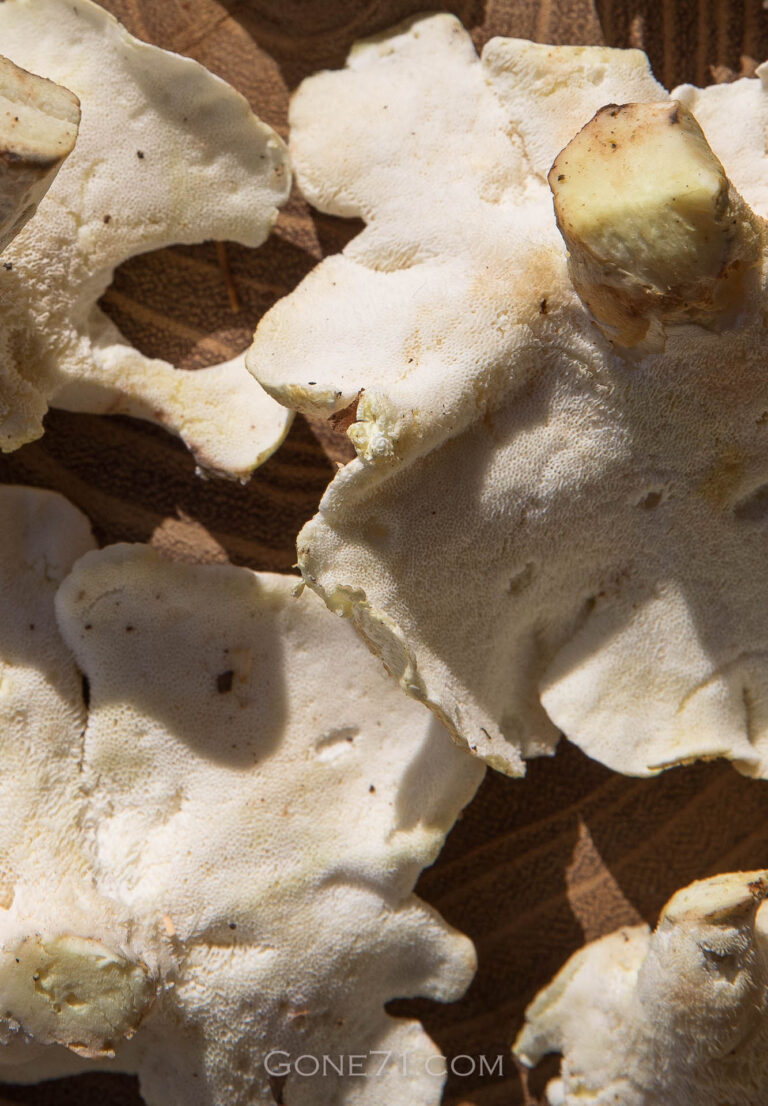
Different species of Albatrellus
- Albatrellus confluens: This species is similar in appearance to Albatrellus ovinus and can also be found growing on the ground at the base of hardwoods, such as oak and beech. However, Albatrellus confluens typically forms clusters, while Albatrellus ovinus typically grows usualy seperated from other specimen.
- Albatrellus caeruleoporus: This species is also known as the blue-foot polypore, it’s typically found in North America and Europe and it’s known for its blue-greenish color.
- Albatrellus citrinus: This mushroom is considered edible and is known for its (bright) yellow color, which can range from lemon to orange. It typically grows on the ground in clusters, often at the base of conifers, such as pines, spruces, and firs. It is very similar to the sheep polypore A. ovinus and can often be only distingusihed via microscope.
- Albatrallus cristatus: “Blaugrüner Kammporling” in German is another species in Europe that can grow in similar habitats as the sheep polypore. It has a yellow-greenish colour and grows usually in clusters.
- Albatrellus ellisii: This species is known as the Ellis’ polypore, it’s typically found in North America and Europe and it’s known for its orange-brown color on the cap.
- Scutiger pes-caprae (Albatrellus pes-caprae): This mushroom is often described as a species of Alabtrellus but is considered a different genus nowadays. This species is known as the goathoof polypore, it’s typically found in Europe and North America and it’s known for its dark brown color on the cap and the shape of the cap that resembles a goat’s hoof.
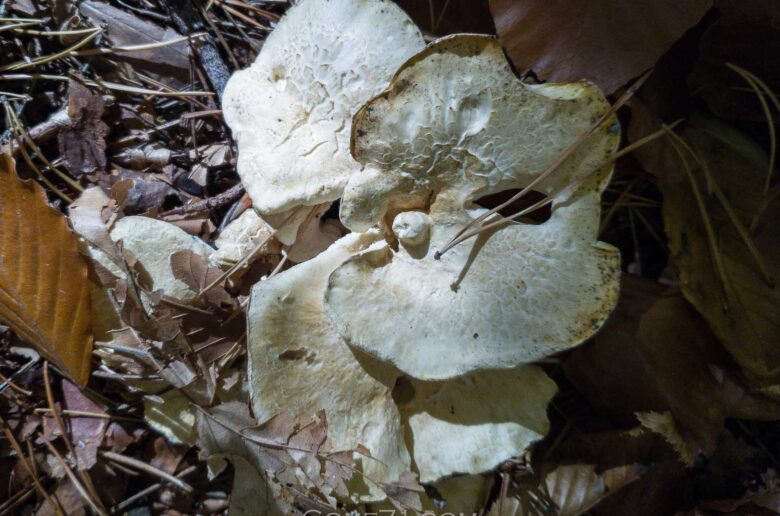
Sheep polypore in history
A. ovinus in history
Albatrellus ovinus is a species of mushroom that has been known for a long time and it has been described by many mycologists and other scientists throughout history. The first scientific description of Albatrellus ovinus was published by the French botanist and mycologist, Jean Bulliard in 1791. He gave it the name Polyporus ovinus, in his book “Histoire des Champignons de la France” (History of the Fungi of France).
The classification and nomenclature of fungi are a continuous process and have been changed over time. Later, in 1821, the German naturalist Christian Hendrik Persoon transferred the species to the genus Albatrellus.
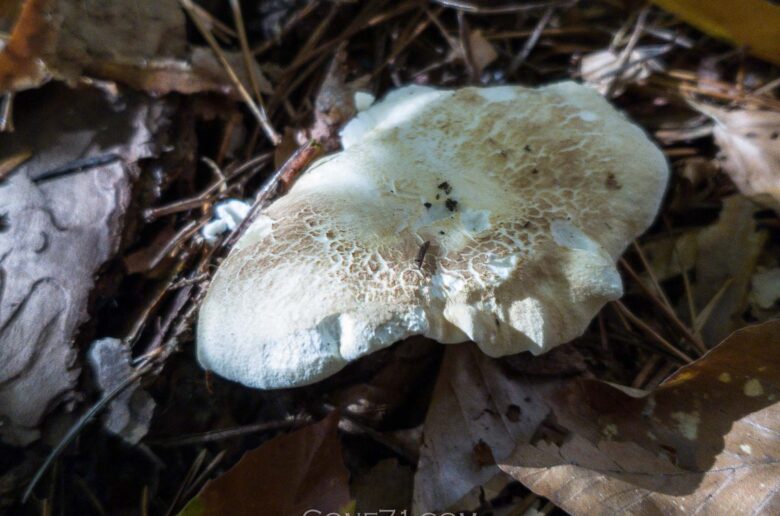
Only harvest mushrooms that you can identify with 100% certainty! The consequences can be life threatening if you are wrong. If you have the slightest doubt: do not eat the mushroom! This is not a mushroom guide! For correct identification consult a mushroom expert.
Sheep polypore in the kitchen
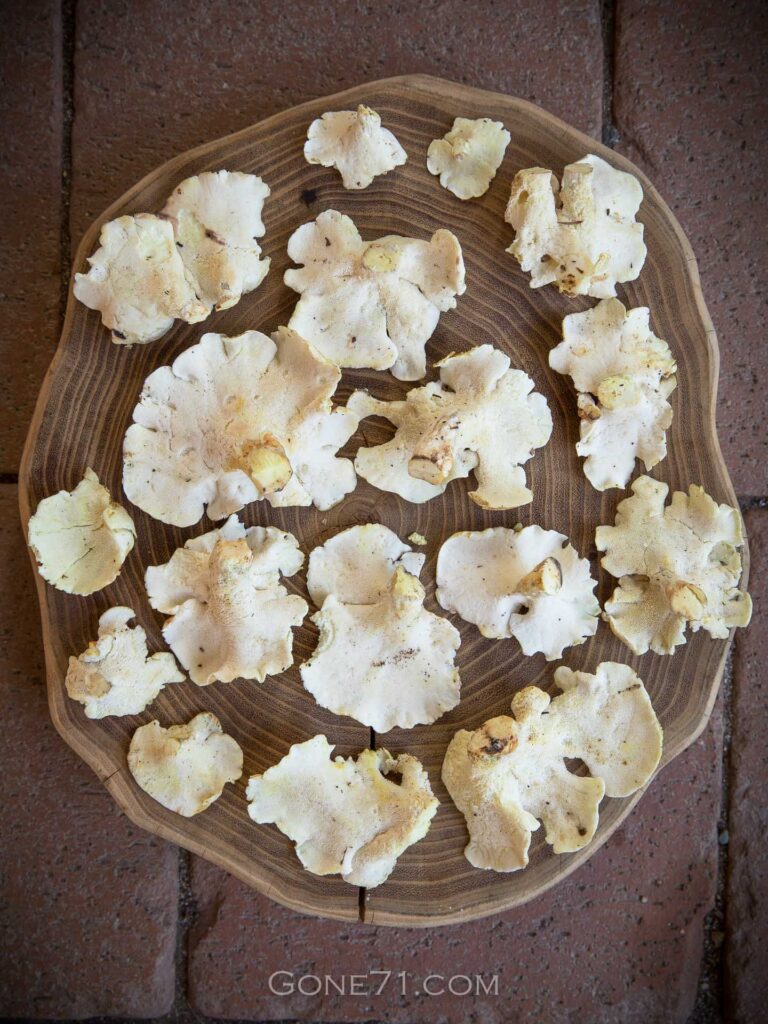
Sheep polypore get very ambivalent reactions when it comes to its culinary values. A culinary suggestion from Scandinavia ist he use of sheep polypore as a substitute for truffles, for example in liver pâté.
We find it very excellent breaded and baked or pickled. The possibility of using it in soups should not be ignored either. All in all, we believe that this mushroom deserves more attention. It is often confused with or equated with the very similar looking fused polypore, which can also be very good but tends to be bitter, especially in older stages of development.
Note that this mushroom turns its white colour to a bright yellow during the cooking process. This is totally onrmal, so don’t be alarmed. The fused polypore in comparison turns its colour to a slightly pinkish tone.
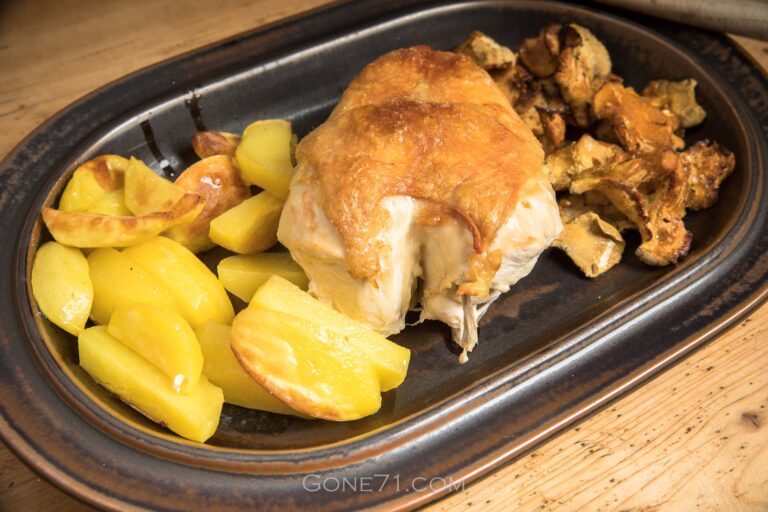

oven-roasted chicken breasts, with potatoes and roasted sheep polypore (A. ovinus)
Ingredients
- Chicken breasts from one chicken
- 600g potatoes
- 2 tablespoons of olive oil
- Salt and pepper, to taste
- 300g of Albatrellus ovinus mushrooms, cleaned and sliced
- 2 tablespoons of butter
- 2 tablespoons of all-purpose flour
Instructions
- Peel the potatoes and cut them in wedges. Toss them with 1 tablespoon of olive oil, salt, and pepper
- Preheat the oven to 220°C.
- Prepare the chicken breasts. Season both sides with salt and pepper and put it together with the potatoes in a big roasting pan or a similar suitable baking vessel.
- Roast in the oven for 25-35 minutes, or until everything is tender and golden brown.
- In a skillet over medium heat, melt 1 tablespoon of butter. Dredge the sliced Albatrellus ovinus mushrooms in the flour and then add them to the skillet. Fry until they are golden brown and crispy, about 5-10 minutes, depending on the size.
- Remove the potatoes and chicken from the oven and let them rest for 10 minutes. Serve the fried Albatrellus ovinus mushrooms as a side dish along with the oven-roasted potatoes and oven-roasted chicken breasts.
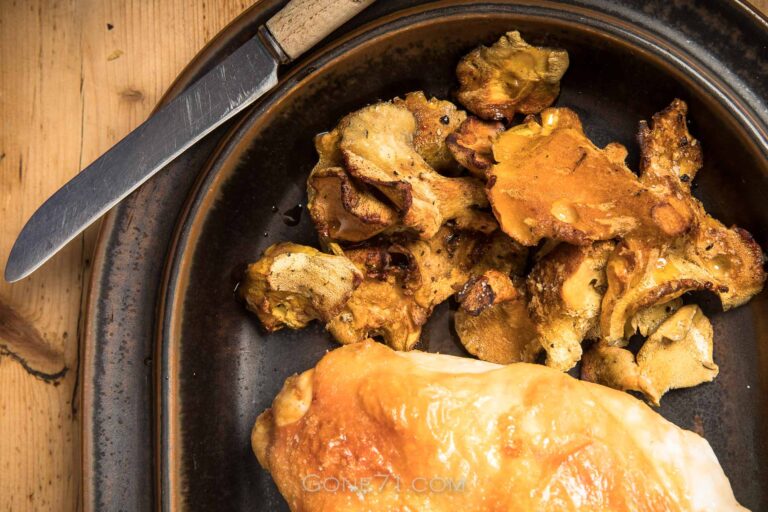
We have compiled this overview with the best of knowledge and belief, but do not claim to be complete and reserve the right to make errors.
Learn more about poisonous mushrooms and mushroom poisons here
↓↓↓
Find some inspiration in other mushroom recipes
↓↓↓
